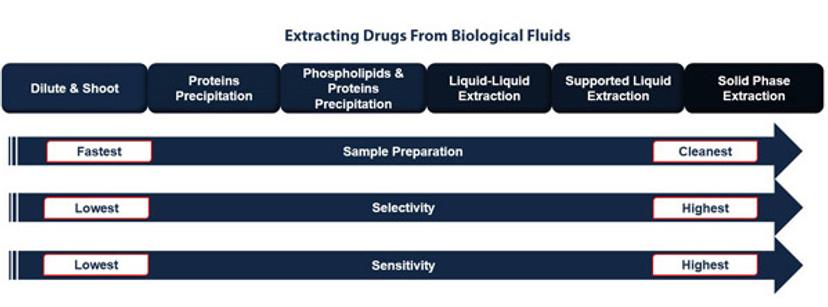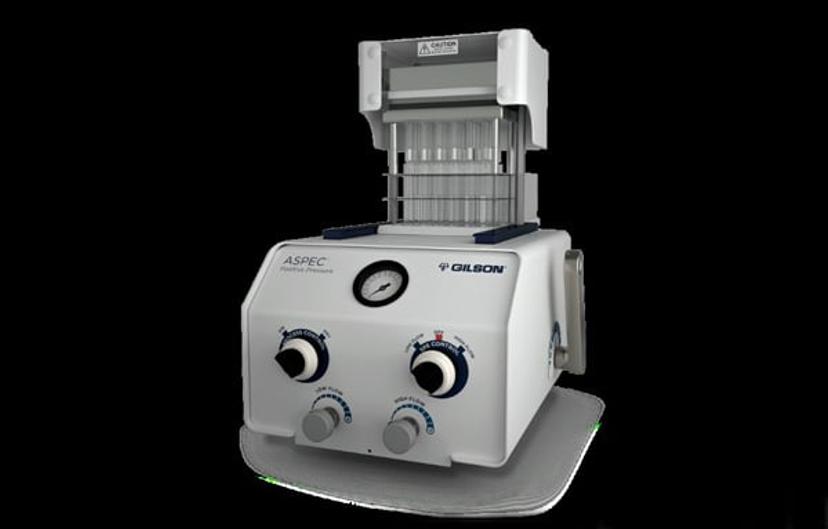Maximize Your Workflow by Improving the Cleanup of Biological Samples for LC-MS
Top tips for improving the cleanup of biological samples for analysis by liquid chromatography-mass spectrometry
12 Oct 2018Liquid chromatography separation followed by mass spectrometry detection, commonly called liquid chromatography-mass spectrometry (LC-MS) has become a standard in the analysis of many target compounds in biological samples. This approach has been highly successful in areas such as drug discovery secondary screenings, pharmacokinetics studies, and the identification of metabolites or drugs in forensics and doping labs. Even smaller hospital toxicology labs have begun to use this technique.
Bioanalysis using LC-MS poses some unique challenges given the complex nature of the typical sample matrices used. These challenges can directly impact signal detection, but also can cause issues with test and sample reproducibility, especially in situations when increased throughput is desired.
Biological sample issues and common cleanup approaches
Unlike purified compounds reconstituted in water, biological samples present different issues for LC-MS analysis. Typical starting materials include serum, plasma, urine, bile and tissue extracts, all of which are complex matrices with numerous and varied compounds. One major problem can arise from the presence of protein in the biological sample because large amounts of protein can directly interfere with the cleanup process by clogging chromatography columns. Signal masking can also be a problem. For example, the presence of phospholipids can lead to ion suppression, a situation where these compounds negatively affect the ionization of the analytes, reducing the signal generated by the target analyte. The concentration of the target analytes may be insufficient for detection. Lastly, the varying viscosities of biological samples (e.g., plasma) can also impact processing in some cleanup methods, especially in higher throughput situations.
A variety of cleanup approaches have been developed to address the issues with LC-MS of biological samples (Figure 1). These cleanup methods represent a continuum, bounded by speed on one end and sample cleanliness on the other, which represents tradeoffs between speed, sample cleanliness, selectivity and sensitivity. Typically, labs will choose a method that requires the least amount of time, such as a simple sample dilution prior to loading onto a chromatography column (also known as “dilute and shoot”). While dilute and shoot might be the fastest and easiest method, it could dilute the target to a point where low abundant metabolites become undetectable. Additionally, contaminants, particularly proteins, are not removed using this method, which may lead to interference with the target signal or result in additional column maintenance.

The other methods on the continuum remove interfering compounds present in biological matrices to varying degrees (Table 1). While most of these methods will remove proteins present in a biological sample, not all address removal of phospholipids. If desalting or solvent exchange is required, more stringent cleanup procedures using simplified liquid extraction (SLE) or solid phase extraction (SPE) may be the appropriate choice. Finally, if the target analytes require concentration or high selectivity, then the best choice is SPE, which is now more simplified with the availability of generic protocols that produce proper recoveries.
Protein Precipitation Protein and Phospholipid Precipitation Liquid-Liquid Extraction (LLE) Supported Liquid Extraction (SLE) Solid Phase Extraction (SPE) Remove particulates ✔ ✔ ✔⚹ ✔ Remove proteins ✔ ✔ ✔ ✔ ✔ Remove phospholipids ✔ ✔⚹ ✔ Remove pigments ✔⚹ ✔ Desalt ✔ ✔ ✔ Switch solvents ✔ ✔ Sample concentration ✔
Table 1. Overview of common LC-MS sample cleanup methods for bioanalysis. Note: “Dilute and Shoot,” which is a sample preparation technique but does not remove interfering substances, was excluded from the table because it is not a cleanup method. *The technique only removes some of the interfering substance.
A solution to increasing manual throughput of sample cleanup for LC-MS
After the most appropriate cleanup method is selected, many labs look to increase manual throughput of that approach while maintaining the reproducibility of their results. All cleanup methods are amenable to higher throughout processing, either through the simultaneous processing of multiple tubes or cartridges or through the use of 96-well plates. For increased manual throughput, these methods require the use of a manifold for the processing samples in parallel. Two manifold options are available: vacuum and positive pressure.
Vacuum manifolds
Traditional vacuum manifolds became popular because they were readily available and easy to use. With the vacuum manifold, the cartridges or 96-well plate are seated on the manifold, a vacuum is applied, and the liquid is pulled through at each stage of the method workflow. Vacuum manifolds, however, have some serious drawbacks. First, it is hard to reproduce the same vacuum between runs and across samples within a run. For example, samples closest to the vacuum source may be subjected to stronger vacuums than those further away. Similarly, some cartridges or wells in a microplate might run dry faster than others, slowing the flow of the remaining samples. Conversely, a well or cartridge may become clogged, altering the vacuum across the remaining samples. Any variances across individual wells or tubes will impact the consistency and reproducibility in recovery of target analytes. With biological samples, these problems are particularly acute because of the varying viscosities of the samples.
Positive pressure manifolds
To overcome the problems associated using vacuum manifolds during biological sample cleanup, positive pressure manifolds have been developed, such as the ASPEC® Positive Pressure Manifold from Gilson. With positive pressure manifolds, pressure is applied to the cartridges or wells from above, pushing liquid through as opposed to the pulling mechanism of the vacuum manifold. With the positive pressure manifold, the pressure is regulated and applied equally across all samples, resulting in more reproducible flow and improved consistency among target recoveries between runs and across samples within a run. In the rare cases when cartridges or wells become clogged, the flow remains constant without acceleration with positive pressure regulation. Essentially, the individual wells or cartridges operate independently, eliminating the need to control each by a separate valve as with some vacuum manifolds.
Another advantage of using a positive pressure manifold is the greater ability to control flow rates between sample cleanup steps. This is especially critical in the SPE workflow, where it is important to slow the flow rate during binding and elution steps for improved recoveries. With positive pressure manifolds like the ASPEC Positive Pressure Manifold (Figure 2), this is easily accomplished with a simple switch.
Many of the available positive pressure manifolds work with either 96-well plates or cartridges, but not both. The recently introduced ASPEC Positive Pressure Manifold (Figure 2) accommodates both 96-well plates and 1-, 3- and 6-mL cartridges on the same unit, a space and cost savings for labs.

Summary
While biological samples present some unique challenges for LC-MS, numerous sample cleanup methods are available to overcome these problems. However, increasing the throughput of these sample cleanup procedures can introduce new issues with reproducibility. Positive pressure manifolds, such as the ASPEC Positive Pressure Manifold from Gilson, offer more control over flow rates among samples and between runs compared to more traditional vacuum manifolds, providing greater confidence in the data generated.
